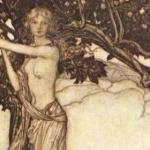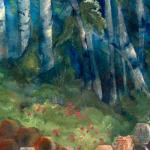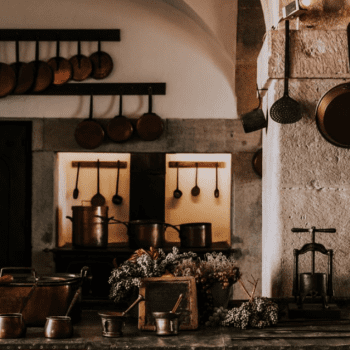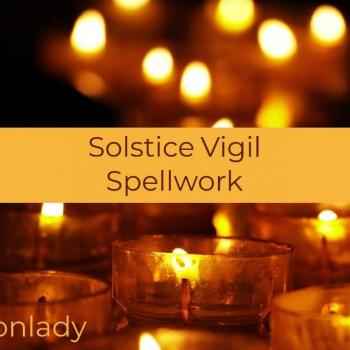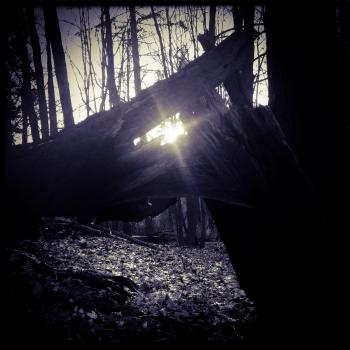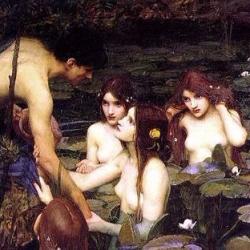Saule is the Sun Mother and Menulis is the Moon Father in the Lithuanian lore. What’s really interesting to me is that they had a whole bunch of kids, who just happen to be the planets.
The names of the planets used in Lithuania and Latvia today are clearly Roman ones with local endings. but we do know that the pagan Balts likely had knowledge of the stars and names for the zodiac. We know there is a recorded story from when a Catholic monk went into the Grand Duchy of Lithuania. He tells a story about how they worshipped a huge hammer that was wielded by a god when he awoke the zodiac to free the sun. We also know that there was a temple to Perkunas that had 12 steps and a fire was lit on each step in succession throughout the year, and that the temple of Perkunas was open to the sky.
Begins to sound like the celestial realm was super important, eh?
We also know that the Baltic afterlife was in the sky, similar to how the Vedics conceptualized the cosmos. So knowing all this we can say that the celestial deities, including the Sun and Moon were incredibly important. Even more than that we can say that it is possible that they were aware that our solar system was heliocentric, that the earth revolved around the sun and not the other way. This is a bit of a stretch, but possible.
This is because some of the lore labels Zemenya as one of Saule’s daughters.
The Earth is the daughter of the Sun. Think about that for a minute.
We also know the sun has other daughters. That’s right folks! Venus is enshrined in the lore as a daughter of Saule. More accurately, twins. Ausrine and Vakarine, the dawn and the dusk. But there is a clear connection between Venus, known as the morning star and the evening star, and the sunrise and sunset.
So that’s all pretty neat, and eventually I hope to know more clearly if this is all a reconstruction or ancient lore. Either way it works pretty well.
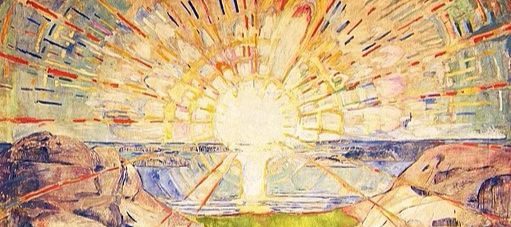
Here’s a list of Saule’s daughters:
Vaivora the planet Mercury, closest to the sun. Known as Ausrine’s Tarnas, or morning star’s servant. Probably because both are internal to us in the solar system and so from earth’s perspective they both stay quite close to the sun. Vaivora translates as rainbow.
Next we have the twins, Ausrine and Vakarine. Ausrine seems to have been more honored and noted than Vakarine, maybe because of that whole incestous thing with the moon. (Wait for it. I’ll get there) She’s also said to have multiple forms, including a sea mare, and a human form when she touches the land. I work with Ausrine quite a bit. Mostly this means getting up at dawn, or even before dawn. This more than anything else in my ongoing exploration of spirituality and religion makes me seem somewhat crazy to many.
Zemenya is the third rock from the sun, and her name literally means the land.
Ziezdre the planet Mars, translates as a knot. Why she’s a knot, I don’t know.
Next we have Indraja or Jupiter. That name seems tempting to me. I’m tempted to draw conclusions and associations with Indra, the Vedic god, but I know better. I’m a grown up here. Not every name that sounds like something else is something else. Thank you modern Linguistics for keeping me on the straight and narrow. But it really does sound like Indra doesn’t it?
Last is Selija or Saturn. The fact that they only have names for the planets that are visible to the naked eye is exciting to me. It indicates that someone was either very clever, or that these names might actually be authentically old. I really hope they are authentically old, but I know too many reconstructions and fabrications to be sure. (The Book of Volos, Iolo Morganwg’s poetry, Cher’s face)
Sun and the Moon get Divorced
But then we get to the story of the tempestuous relationship between the Sun and the Moon. Saule and Menulis are married, you see, they’ve had lots of little planet babies. But while the sun is constant, the moon is not. He sees the dawn, Ausrine, and she is the only thing more beautiful than the sun, with her radiant hair. They run off together (Yup, with his daughter. The Greeks aren’t the only ones with gods who do things like that.)
Saule is less than pleased, but it’s Perkunas the Thunderer who deals with the little tryst. They have thrown the cosmic order the Darna out of balance and it must be brought back into balance. Perkunas smites Menulis with his axe and that, dear readers, is why the moon has phases. He got smote. In the end, the sun and the moon love their daughter Zemenya so much that they both take turns spending time with her in one of the earliest visitation rights settlements ever. I really love how powerful Saule is in all this, and how both the sun and moon love their children, even if it’s not always a healthy love. Of course the sun gets to share the day with the earth and the moon gets the night (mostly) But he’s a bit of a trouble maker and we all know it.
The moon deserves his own post, because there’s all kinds of interesting lore about him. Each phase has a name, and there’s a whole astrological system for what phase a human is born during which tells about who they are and will grow up to be. That however will have to wait for another time.
Bringing it Home
I recently reset my altar to reflect the importance of the celestial to my spiritual work. On the top shelf of my altar I have a row of little piles of stones that represent each of the planets to me. I do include both Uranus and Neptune, and and Moon as well. Working with Venus as the morning and evening star has showed me the importance of getting to know the planetary shifts. I have found a lot of meaning in doing so through a Northern European lens. Saule and her daughters hold a great deal of personal meaning for me.
Last midsummer I called on all of them as part of the main rite for our grove, and gave each of them offering as the grove toned. It was beautiful and healing, as a midsummer rite should be.
If you’re interested in learning more about Baltic mythology, here’s a couple of my posts. All of this is through my personal view and lens, as an American pagan priestess.
How I got started worshipping Baltic Gods
Wherin I talk about the Baltic and Slavic Earth Mothers
Devotion to a Lithuanian Dawn Goddess
If you like my work and would like to support it, please consider donating at my patreon or making a purchase from my etsy store. Thank you so much.

